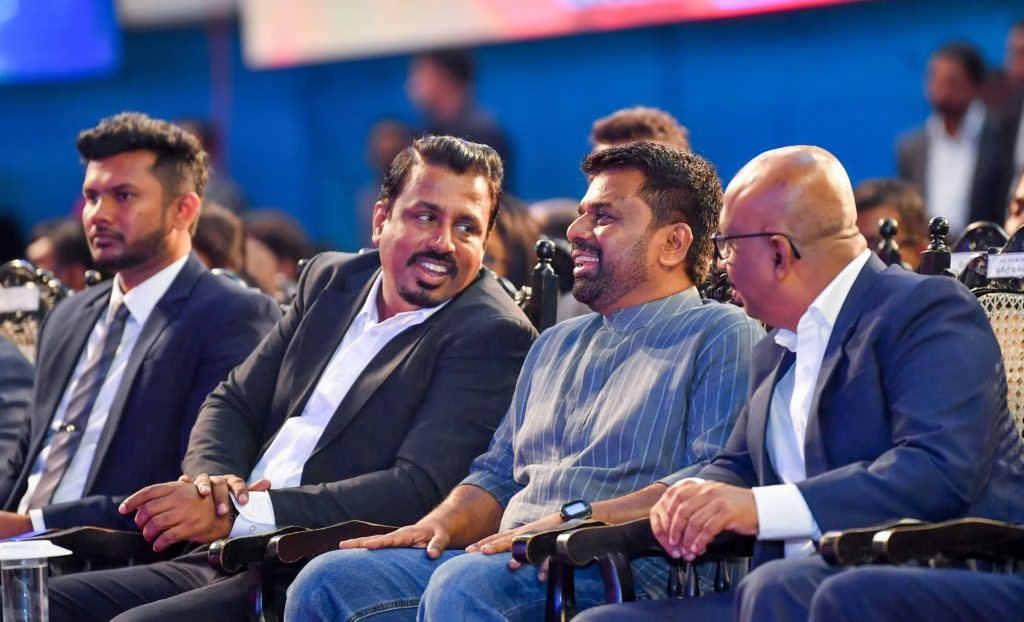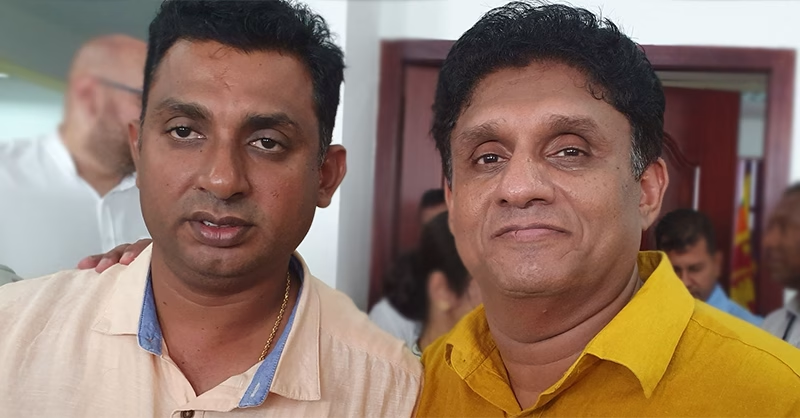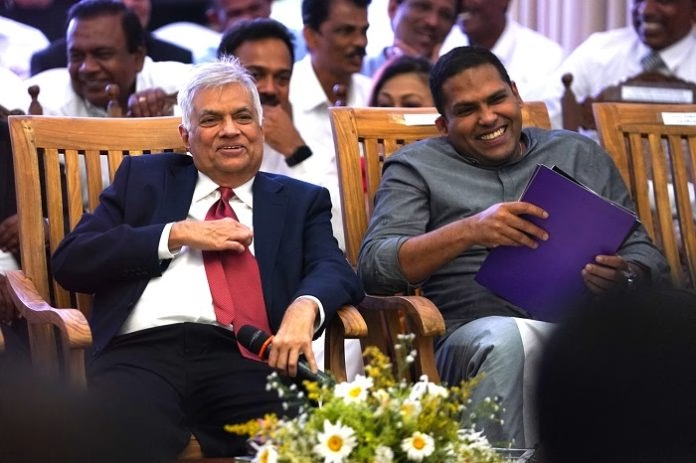Accusations arose from youth leaders and politicians across many districts that the government’s political authority and certain representatives intervened in the selection of district leaders who participated in the National Youth Service Council (NYSC) Youth Convention, thereby politicizing the process. Despite the selection of youth leaders through various methods, the ‘Youth Club’ National Youth Convention, organized by the National Youth Service Council (NYSC), was held on August 12, 2025, at the Sugathadasa Indoor Stadium in Colombo, presided over by President Anura Kumara Dissanayake.
The total expenditure incurred by the National Youth Service Council for this massive national program was Rs. 38.8 million (Rs. 38,834,217.64). It is important to conduct a deep financial and administrative investigation into this cost. An analysis of the data provided under the Right to Information Act reveals several significant issues regarding the convention’s financial plan, procurement process, and the mechanism for selecting youth leaders.
Financial Plan and Expenditure Structure of the Convention
According to the information provided by the Youth Service Council, the total expenditure for the National Youth Convention was Rs. 38,834,217.64, allocated under several main categories. The largest share of the total expenditure was allocated for the provision of T-shirts, amounting to eleven million eight hundred twelve thousand five hundred rupees (Rs. 11,812,500.00). This constitutes a substantial 30.42% of the convention’s total cost.
The relevant documents indicate that Rs. 525,000 was spent on refreshments for approximately 200 VIPs, including the President, Ministers, and other dignitaries. This means Rs. 2,625.00 was allocated for the refreshments of a single person in this category. A crucial point here is that despite the President attending the event, he did not participate in this specific refreshment service. An amount of Rs. 536,445.50 was allocated for officials who attended to the event’s duties, an amount similar to the VIP refreshments cost. Furthermore, Rs. 2,196,000 was spent on refreshments for the 7,500 youth and others. Although the exact number of participating youth leaders is not mentioned, as T-shirts were prepared for 7,500, the approximate number of participating youth can be assumed to be close to that figure. Accordingly, the cost for refreshments for the 7,500 youth only amounted to about Rs. 292 per person. The total catering expenses account for only 9.3% of the total expenditure. This amount appears to be extremely high, especially when considering the economic status of the middle-class youth who attend such government programs.
The priority given to allocating more funds for T-shirts (30.42%) compared to direct operational costs such as participant transport (16.92%) and stage/decorations (15.72%) is questionable for a national project aimed at promoting youth participation.
Additionally, Rs. 1,207,606.14 was spent on “Other” expenses (printing, chairs/huts, video animation, language translation kits, announcements/translations, essential services, officer travel expenses/overtime), which is 3.11% of the total expenditure.
| Expense Item | Amount (Rs.) | Percentage of Total Cost (%) |
| T-Shirts | 11,812,500.00 | 30.42% |
| Participant Transport Costs | 6,570,020.00 | 16.92% |
| Stage, Decorations, Lighting | 6,105,000.00 | 15.72% |
| Food | 4,852,465.00 | 12.49% |
| Sound Services | 3,200,000.00 | 8.24% |
| Refreshments (Catering) | 3,257,445.50 | 8.39% |
| Flags and Banners | 1,274,400.00 | 3.28% |
| Fuel | 459,781.00 | 1.18% |
| Other (Printing, Chairs/Huts, Video Animation, Language Translation Kits, Announcements/Translations, Essential Services, Officer Travel Expenses/Overtime) | 1,207,606.14 | 3.11% |
| Total | 38,834,217.64 | 100.00% |
Difference in Refreshment Costs Among VIPs, Officials, and Participants
The total Refreshments and Catering cost of Rs. 3,257,445.50 appears to be calculated separately from the “Food” expense (Rs. 4,852,465.00). A separate analysis of this refreshment cost warrants attention to the cost management policy that was followed.
| Refreshment Category | Amount (Rs.) | Persons Catered For |
| President, Ministers, Ambassadors, VIPs, Invited Guests | 525,000.00 | Approximately 200 persons (President did not participate) |
| Officials who attended to the event’s duties | 536,445.50 | Officials |
| Youth and others (excluding the above) | 2,196,000.00 | Youth and Others |
| Total | 3,257,445.50 |
Rs. 11.8 Million for T-Shirts
The most prominent issue is that nearly one-third (30.42%) of the total expenditure was spent on providing T-shirts for the participating youth. While the procurement process for the 7,500 T-shirts—the largest single expense of the convention (Rs. 11,812,500.00)—was confirmed to have been conducted through a tender process, internal sources at the Youth Service Council indicate that an audit is currently underway due to concerns over its transparency. Furthermore, participants stated that the T-shirts could not be provided to all youth on the same day, but were distributed on several occasions.
Tenders were called for the production of 7,500 T-shirts, and the contract was awarded to CHAYA TEX, which bid to supply them at Rs. 1,575 per unit. The documents show that the tender process was fully executed, but the lack of an open statement regarding the price differences between the financial decision and the bid evaluation tables challenges transparency.

For instance, Captain Promotion submitted a bid of Rs. 1,750, while Cosmos Sports submitted a price of Rs. 1,375. However, with an additional 18% VAT, the price for Cosmos Sports’ T-shirt would be Rs. 1,622. The price of the finally selected company, CHAYA TEX, was Rs. 1,575.
Information provided by the National Youth Service Council reveals that a Departmental Procurement Committee managed the tender process under the Procurement Guidelines (2.11.3), and quotations were sought through supplier registries and ‘Rainbow Pages,’ with four institutions submitting prices. Accordingly, the Procurement Board approved the proposal by CHAYA TEX (Pannipitiya, Hokandara Road) to supply 7,500 T-shirts at a rate of Rs. 1,575.00 per unit, for a total of Rs. 11,812,500.00.
Analysis of the Tender Price Table:
| Institution | Price per Unit (Rs.) | Total Price (Excl. VAT – Rs.) | Total Price (Incl. VAT – Rs.) |
| Captain Promotion | 1,750.00 | 13,125,000.00 | 15,487,500.00 |
| Cosmos Sports Solutions (PVT) Ltd | 1,375.00 | 10,312,500.00 | 12,168,750.00 |
| Vilka Apparels | 1,845.00 | – | – |
| CHAYA TEX | 1,575.00 | 11,812,500.00 | – |
District-Level Activities and Leader Selection
It is reported that the National Youth Service Council did not directly provide funds for the “Youth Club” District Conventions held at the district level. This implies that if district-level meetings or conventions were held, the expenses might have been covered by other organizations, sponsors, or the Youth Club boards established in the respective districts. However, it is revealed that Rs. 4.9 million (Rs. 4,938,450.00) was spent on election-related activities for selecting youth leaders in 337 Divisional Secretariat areas. The NYSC states that representatives were selected for the National Board from the District Boards, who were in turn selected from the Regional Boards, which comprised executive officers of the grass-roots level Youth Clubs. The opportunity to attend the “Youth Club” National Convention was granted to the executive officers of the National Board, District Boards, Regional Boards, and Youth Clubs.
While the “Youth Club” Convention brought together the nation’s youth, severe criticism was leveled by the youth leaders themselves, who claimed it was not aimed at genuine youth policy development but rather at serving the political objectives of those in power. Therefore, the Rs. 38.8 million “Youth Club” National Youth Convention appears to have been reduced to a mere publicity and exhibition exercise, rather than one focused on policy development for the common advancement of the youth generation. The money spent on such events would be far more effective if invested in training programs or technological innovation initiatives that would contribute to the future well-being of the youth.
–Rahul Samantha Hettiarchchi





